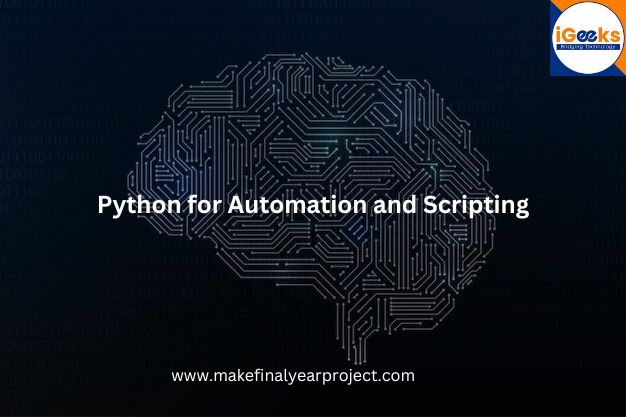By iGeeks Technologies:
Unlock the power of deep learning with these hands-on Python projects. At iGeeks Technologies, we believe in the transformative potential of deep learning, and these projects are designed to give you practical experience in implementing cutting-edge solutions. Explore the intersection of Python programming and deep learning algorithms with these engaging projects.
Python for Automation and Scripting
Python has emerged as a popular choice for automation and scripting due to its simplicity, versatility, and extensive library support. Whether you’re automating repetitive tasks, building scripts for system administration, performing data analysis, or creating custom utilities, Python provides a powerful and intuitive platform for streamlining workflows and increasing productivity.
In this blog post, we’ll explore how Python can be used for automation and scripting across various domains, showcasing its capabilities beyond basic tasks and highlighting its versatility in handling complex scenarios.
Automating Tasks with Python
Python excels at automating tasks that involve repetitive actions or batch processing. Whether it’s renaming files, parsing log files, scraping data from websites, or interacting with APIs, Python’s concise syntax and rich library ecosystem make it easy to write scripts that automate these tasks efficiently. With modules like os, shutil, and glob for file operations, and libraries like requests and BeautifulSoup for web interactions, Python offers robust support for automating a wide range of tasks.
Scripting for System Administration
Python’s flexibility and ease of use make it well-suited for scripting tasks in system administration. Whether you’re managing servers, configuring network devices, performing system monitoring, or automating deployment pipelines, Python offers libraries and frameworks that streamline these tasks. The paramiko library allows you to automate SSH connections and execute commands on remote servers, while tools like Fabric and Ansible provide higher-level abstractions for system administration tasks, making them more efficient and scalable.
Enhanced Data Processing and Analysis
Beyond basic automation and system administration tasks, Python’s capabilities extend to data processing and analysis, making it a versatile tool for handling large datasets and performing complex computations. Libraries like pandas and NumPy provide powerful data structures and functions for data manipulation, allowing you to clean, transform, and analyze data with ease. Moreover, Python’s integration with visualization libraries such as Matplotlib and Seaborn enables you to create informative charts, graphs, and plots to visualize your data effectively.
Web Scraping and API Integration
Python’s versatility extends to web scraping and API integration, allowing you to extract data from websites and integrate with external services seamlessly. With libraries like Scrapy and Beautiful Soup, you can automate the process of extracting information from web pages, making it easier to gather data for analysis or reporting. Additionally, Python’s support for HTTP requests and APIs enables you to interact with web services, fetch data, and perform operations programmatically, opening up possibilities for integrating with third-party services and building custom solutions.
Conclusion
Python’s simplicity, versatility, and extensive library support make it an ideal language for automation, scripting, data processing, web scraping, and API integration. Whether you’re automating repetitive tasks, managing systems, performing data analysis, or interacting with external services, Python provides the tools and frameworks needed to streamline workflows and increase productivity.
By harnessing the power of Python for automation and scripting, developers and system administrators can save time, reduce errors, and focus on higher-value activities. As Python continues to evolve and grow, its role in automation, data processing, and web integration is expected to expand further, with new libraries, tools, and frameworks emerging to address evolving needs. By staying current with Python’s ecosystem and leveraging its capabilities effectively, developers can stay ahead of the curve and unlock new possibilities for automation and productivity.





